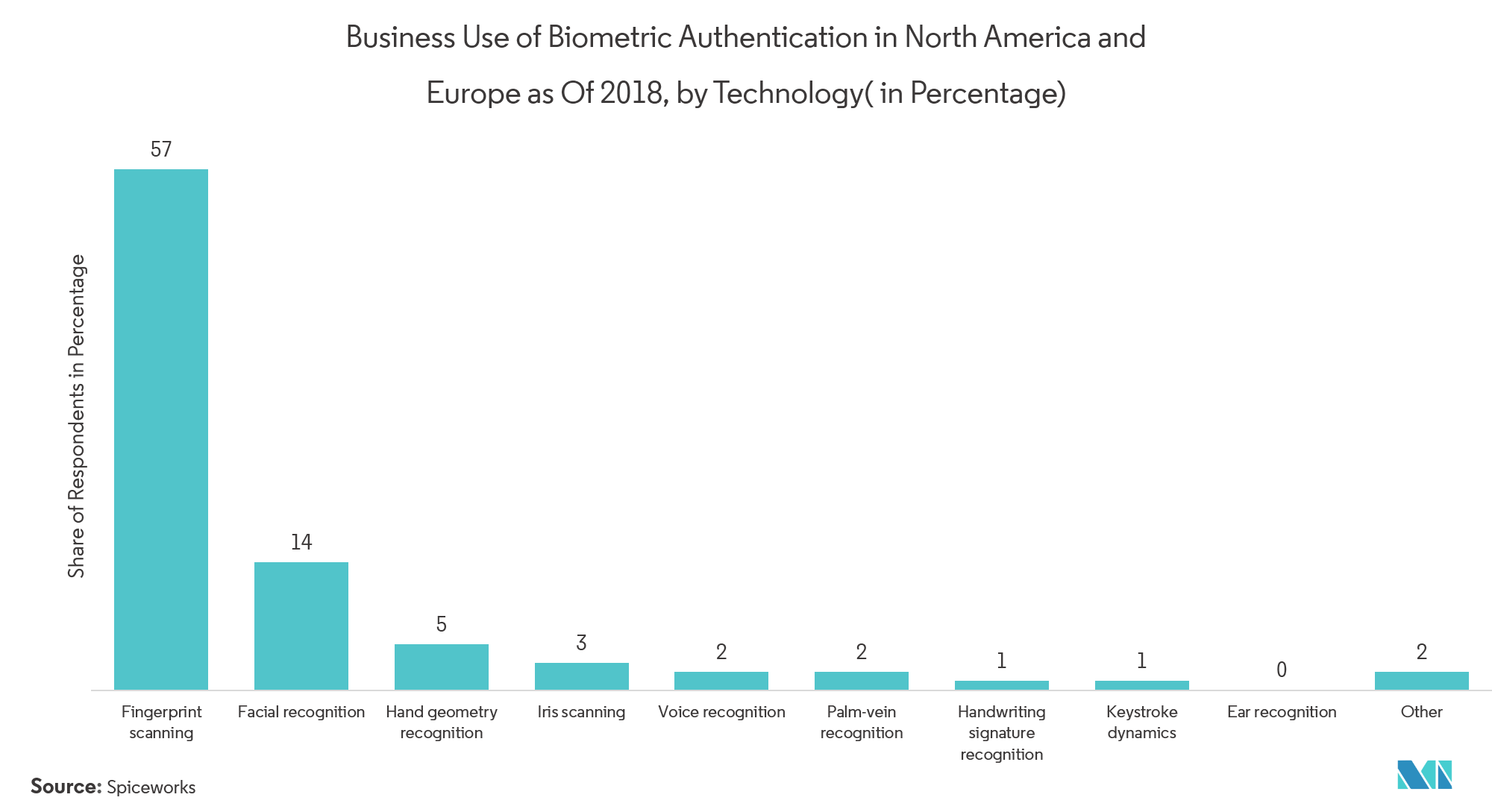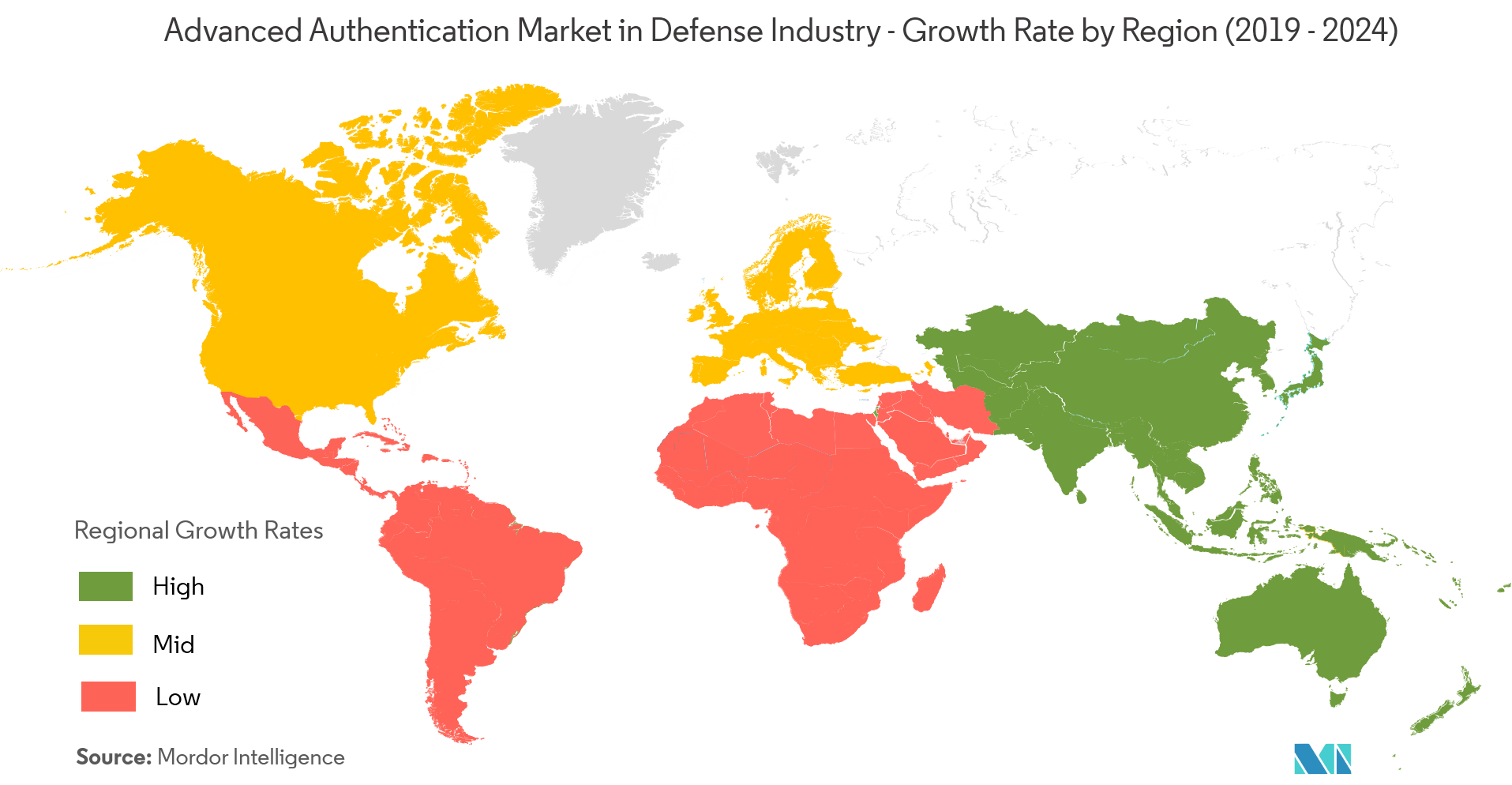Market Trends of Advanced Authentication Industry in Defense Industry
This section covers the major market trends shaping the Defense Industry Advanced Authentication Market according to our research experts:
Biometrics to Drive the Advanced Authentication Market in Defense Industry
- Biometrics analyze and verify/authenticate individuals based on human physical characteristics such as fingerprints, retinas and irises, palm, speech, and voice, among others. This method of authentication has been extensively adopted, owing to the fundamental advantages it grants because of its non-transferable, non-repudiation, and not-identifiable nature, thus providing a great level of protection against deception and fraud. For instance, the US Department of Defense (DOD) said the Government Accountability Office (GAO) it intends to have its Identity Matching Engine for Security and Analysis (IMESA) system connected to its Automated Biometric Identification System (ABIS) for vetting individuals for access to all domestic DOD installations and facilities.
- The technology found successful implementation across various end-users, such as forensics and governments, among others. Moreover, the widespread availability of fingerprint sensors in affordable mobile devices and government national ID programs have been instrumental in increasing the awareness and adoption of this technology. Biometric identification services serve to protect, through its Office of Biometric Identity Management (OBIM), which supplies the technology for matching, storing, and sharing biometric data.
- Armies around the world now use biometrics as a way to intensify battlefield awareness and handle encounters with mala fide members which may be hidden in civilian populations. The U.S. military pioneered the usage of biometrics in Iraq and Afghanistan, where biometric indicators such as irises, fingerprints, and facial images were gathered from captured prisoners and other people in the field. Since then, the application of biometrics in military applications has extended significantly. Biometrics are now used to know pirates in the Indian Ocean, trace terrorist travel around the world, and map the relationships between criminal networks which pose military intimidation.

North America Holds a Dominant Share of Advanced Authentication Market in Defense Industry
- North America contains a significant share in the market, with the United States governing the advanced authentication market in defense, followed by Canada. The refinement level of professional identity thieves involved in organized crime in the country continues to progress, along with the counter methods firms used to develop. The US military supply chains well-documented obstacle is counterfeit electronics, with about 1800 estimated cases inside the military system. Counterfeits threaten national security and the stories of servicemen. These factors are spurring the need for advanced authentication solutions in this area. Also, growing ransomware attacks are supporting market growth.
- The North American advanced authentication segment is registering rapid growth, due to technological advancements and an established infrastructure. Key organizations in the region are adopting advanced authentication tools, to ensure data security. Identity theft is the fastest-growing threat in the region. According to CNBC, 53% of thefts of consumers’ identity data are “non-digital,” meaning they don’t involve - or at least, don’t start with - the thief exploiting some cyber vulnerability in 2018. Furthermore, North America has established and secure governments, which significantly rely on data security. Identity verification at online checkout systems is widespread in the region.


